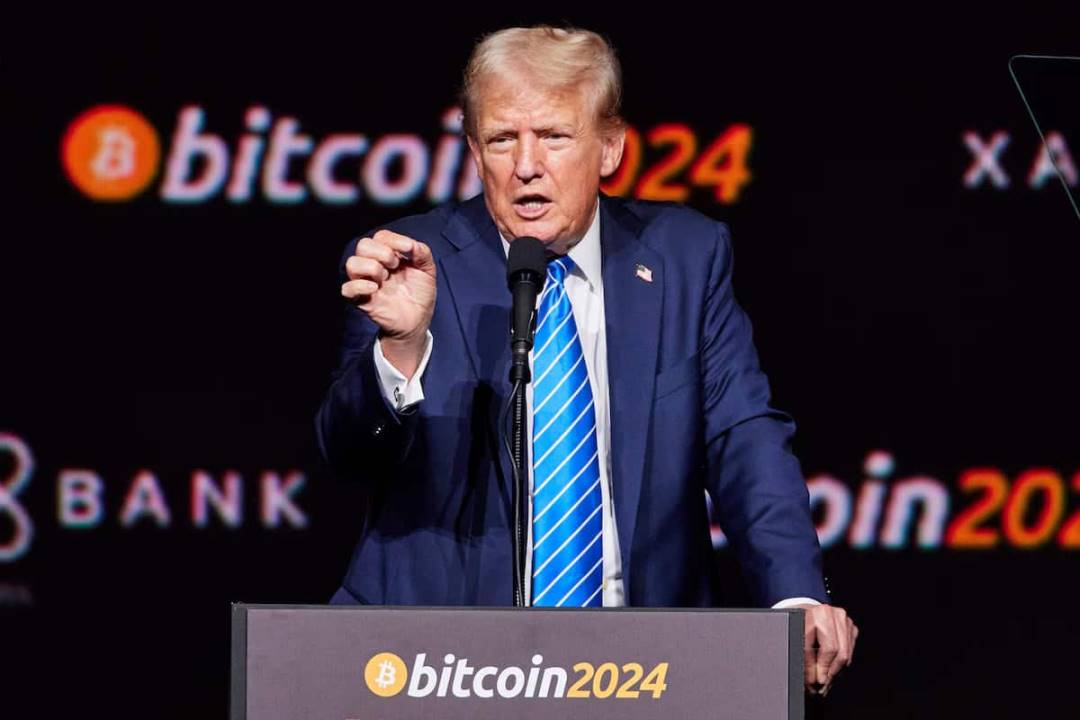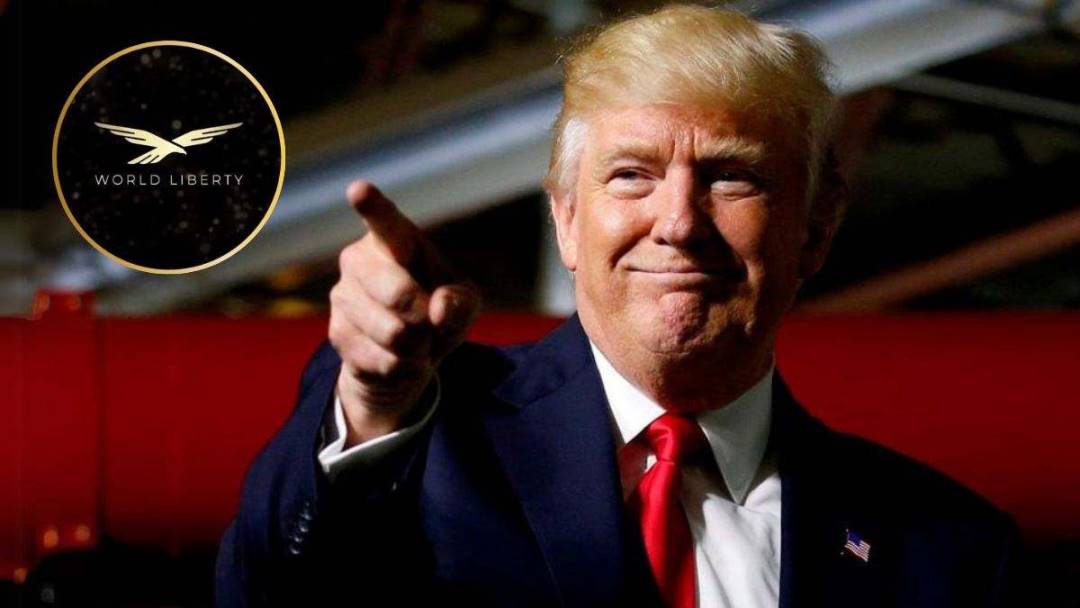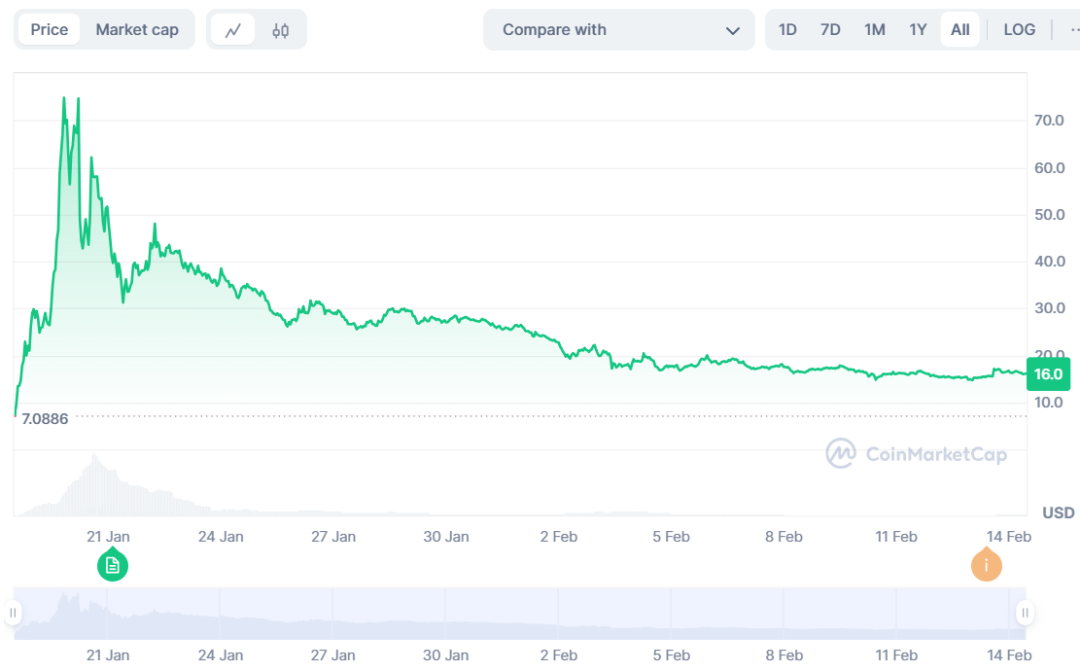Author: Huohuo, Bai Hua Blockchain
From the end of last year to the beginning of this year, the newly elected US President Trump made many promises about Bit and the crypto industry during the election and before taking office, directly fueling a wave of hype in the crypto market. Although Trump did not "burn the bridge" after taking office, as some commentators had suggested, but rather constructively implemented the various crypto-friendly policies he had promised earlier. However, the subsequent roller coaster ride of the TRUMP Memecoin and the complex macro environment with increased tariffs have caused the market sentiment to quickly shift from frenzy to panic, sparking much controversy.
The current crypto market performance is below expectations, and it seems that the long-term impact of Trump's series of Bit/crypto policies has not been fully priced in. Have these really been underestimated?
01. Implementation status of Trump's top 10 crypto policy commitments
During the 2024 presidential campaign, Trump proposed 10 major crypto currency policy commitments, clearly stating that he would promote the development of the US crypto industry and formulate a friendly regulatory framework for it.

However, in his inauguration speech on January 20th, Trump did not mention crypto-related issues. But Bitcoin Magazine CEO David Bailey later wrote that crypto-related executive orders had been included in the first 200 executive orders issued by Trump after taking office, indicating that crypto policies would still be promoted.
As time has passed, Trump has been in office for nearly a month, so how has the implementation of these 10 policies gone?
1) Make the US the global capital of cryptocurrencies
On January 23, 2025, Trump signed an executive order aimed at promoting the US's leadership position in crypto assets and financial technology, emphasizing support for the development of blockchain and crypto assets. David Sacks, the AI and cryptocurrency commissioner appointed by Trump, stated clearly: "We want to make the US the world capital of AI and bring significant economic benefits to the country."
2) Stop the crackdown on the crypto industry within an hour of taking office
On January 23, Trump signed an executive order stating that a crypto currency working group would be established to propose a new regulatory framework for crypto assets and explore the creation of a Bit national reserve.
3) Prevent the US government from further developing a central bank digital currency (CBDC)
The January 23 executive order explicitly prohibits the establishment, issuance or promotion of CBDC within the US, and requires the immediate termination of any related plans.
4) Establish a strategic Bit reserve
The government is currently evaluating the possibility of establishing a crypto asset reserve, but no final decision has been made yet. However, on January 23, Senator Cynthia Lummis, who proposed the Bit Bill, was appointed chair of the Senate Banking Crypto Asset Subcommittee, and should push the bill forward again.
5) Dismiss SEC Chairman Gary Gensler
Gary Gensler left office on January 20, and on January 21 Trump announced that SEC Republican Commissioner Mark T. Uyeda would serve as acting chairman until Paul Atkins (Trump's official nominee to replace Gensler) completes the Senate confirmation process. On the same day, Mark announced the establishment of a crypto currency working group to develop a clear and transparent US crypto asset regulatory framework.
Additionally, according to news on February 4, the Trump administration is reducing the members of the SEC's crypto enforcement team, which had previously been dedicated to crypto enforcement actions and consisted of more than 50 lawyers and staff, though the exact number of layoffs is not yet known.
6) Prevent the US from selling its Bit holdings
There has been no official statement yet on the US government's Bit holdings, so we'll have to wait and see if there is any new information on this later.
7) Suggest using cryptocurrencies to solve the US debt problem
There is currently no public information showing that the government has taken specific measures to use crypto assets to address the national debt.
8) Propose a comprehensive crypto policy
A comprehensive crypto policy has not been implemented yet, but the new crypto working group established by the executive order mentioned earlier has been instructed to submit regulatory and legislative recommendations on crypto assets within 180 days, in order to formulate a comprehensive crypto currency policy.
9) Establish a crypto currency advisory committee
A working group composed of senior officials from multiple departments has been established to propose a regulatory framework for crypto assets.
10) Reduce the sentence of Silk Road founder Ross Ulbricht
On January 23, Trump signed a pardon order, releasing Ross Ulbricht who had been serving an 11-year sentence.
So far, most of the 10 crypto-friendly policies promised by Trump have been implemented, especially in terms of developing the regulatory framework and policy support, it just needs more time to fully realize some of the policies.
02. Other crypto-related dynamics of Trump
In addition to the crypto-related parts included in the first 200 executive orders after taking office, and the crypto policies he had promised earlier, Trump has also made many other explorations related to crypto during and before his term.
1) Support the launch of the DeFi platform World Liberty Financial
World Liberty Financial (WLFI) is a DeFi project supported by the Trump family, launched in September 2024, providing blockchain financial services such as lending, trading and yield farming. Although Trump and his children actively promoted it, WLFI has no direct legal relationship with the Trump family, and only has the authorized use of their brand for promotion. This ambiguous relationship has raised market doubts, and the WLFI Token only has governance functions without economic rights. The initial Token sale was lackluster.

However, with Trump's inauguration and the spread of the TRUMP Memecoin effect, the market heat of WLFI has risen. After January 20, 20% (2 billion) of its Tokens were sold out, raising $1 billion. Driven by market demand, WLFI has also sold an additional 5% (500 million) Tokens at a price of $0.05, up from the initial price, and as of February 12, 81% have been sold.
WLFI not only relies on the Trump brand, but its team also includes veteran crypto industry professionals, and it has established partnerships with institutions like Aave and Ethena Labs. Its multi-signature address currently holds over $74.5 million in crypto assets, mainly invested in ETH, WBTC, AAVE and others.
2) Launch the TRUMP Memecoin
On January 17, just 3 days before the presidential inauguration, Trump launched the "TRUMP Memecoin" on Solana, whose market cap soared to $14.5 billion in just two days, also driving Bit to break through $109,000. However, the hype quickly faded, and by January 30, the market cap had dropped by two-thirds, with transaction fees reaching $86-100 million. Trump's wife Melania later launched the "MELANIA Memecoin", which also experienced a sharp decline, with TRUMP dropping 64.7% in a week and MELANIA dropping over 80%.

Price trend of TRUMP Memecoin since its launch, source: CoinmarketCap
TRUMP was led by Trump's CIC Digital company, mainly profiting from transaction fees, but the specific earnings and ownership are still not transparent. On-chain data analysis shows that at least 50 major investors in the early holders of TRUMP each made over $10 million in profits, while about 200,000 small investors suffered losses.
It is worth noting that the launch of TRUMP in the short term caused a "blood-sucking effect" on the market, draining liquidity, leading to a general decline in crypto currencies outside the Solana ecosystem. Subsequently, the WLFI project supported by Trump began to buy ETH assets in batches.
3) Establish a crypto currency working group
On January 23, 2025, President Trump signed an executive order establishing a new task force - the Cryptocurrency Task Force - aimed at proposing new cryptocurrency asset regulations and exploring the possibility of establishing a national cryptocurrency reserve. The task force is led by David Sacks, Trump's appointed AI and Cryptocurrency Commissioner, and includes government officials such as the Secretary of the Treasury, Attorney General, Secretary of Commerce, SEC Chair, and CFTC Chair.
According to the executive order, the task force will submit a report within 180 days, proposing regulatory recommendations on stablecoin management, market structure, consumer protection, and assessing the feasibility of establishing a national cryptocurrency asset reserve. Sacks stated: "We want to make America the world capital of AI, and bring substantial economic benefits to the country."

This initiative focuses on the integration of AI and cryptocurrency assets, which was not previously mentioned in Trump's election promises. Currently, Trump aims to position the US as a global leader in these critical technology fields, attempting to further strengthen America's advantage in the global technology competition through the synergistic development of AI and cryptocurrency assets.
03. How do crypto KOLs view it?
KOLs have diverse and complex views on Trump's cryptocurrency policy. Based on online discussions and analyses, here are some of the main perspectives:
1) Optimists
Some KOLs believe that Trump's policy will have a positive impact on the cryptocurrency industry. They point out that Trump's executive order may mark a shift from regulatory suppression to supportive policies, such as stopping the SEC's crackdown on cryptocurrencies, making the government more accepting of crypto technology, and involving entrepreneurs in policymaking - which are seen as potentially bringing more innovation opportunities and regulatory clarity to the industry.
For example, a16z co-founder Marc Andreessen expressed that Trump's policy is beneficial for the cryptocurrency industry. He has expressed confidence in the regulatory relaxation and policy support that the Trump administration may bring.
Crypto analyst @skydegencall stated that not only did Trump not stop supporting cryptocurrencies after the election, but he also included Ethereum in his economic plan, believing this will change the game rules and that cryptocurrency assets will become part of Trump's legacy.
Solana community leader @sol_jingou believes that Trump's executive order will trigger a series of chain reactions, including stopping the SEC's crackdown on cryptocurrencies, making government agencies accept crypto technology, allowing entrepreneurs to participate in policymaking, and the government itself becoming a participant in the crypto market, stating that the winners will not be short-term speculators.
Crypto technology expert @0xCheshire also mentioned that Trump's executive order will lead to the SEC relaxing its suppression of cryptocurrencies and the government accepting crypto technology, and pointed out that this policy shift is very beneficial to the industry, seeing it as a 180-degree turnaround from high-pressure regulation to comprehensive support.
2) Skeptics and Critics
There are also KOLs who are skeptical of these policies. They are concerned that Trump's policies may be more driven by political or personal interests rather than a genuine understanding and support for crypto technology. Particularly in the discussions around Trump's own cryptocurrency, TRUMP, there are views questioning whether this could lead to market manipulation or conflicts of interest.
For example, Coinbase CEO Brian Armstrong welcomed the potential regulatory relaxation brought by Trump's policy, but expressed concerns about whether the policy can truly serve the industry, avoid conflicts of interest, and provide long-term stability. He has publicly emphasized that any policy must truly understand and support the basic principles of cryptocurrencies, such as decentralization and user privacy.
Associate Professor of Finance @LarisaYarovaya, in an article published in The Guardian, took a critical stance on Trump's cryptocurrency policy, arguing that Trump's policy could leave investors unprotected and vulnerable to financial manipulation, misconduct, and bubble bursts.
Bloomberg investigative reporter @ZekeFaux, in an NPR interview, expressed concerns about Trump and his family entering the crypto space, particularly the potential conflict of interest issues around Trump launching his own cryptocurrency.
US Senator @ElizabethWarren expressed concerns about Trump's cryptocurrency policy, emphasizing that such a policy may be for personal interests rather than public interests.
Overall, KOLs' views reflect the dual expectations and concerns about Trump's cryptocurrency policy. While many acknowledge the potential opportunities that policy changes may bring, there are also numerous voices cautioning the need to closely observe the actual implementation and impact of the policies.

04. Summary
On the one hand, many of the ten cryptocurrency policy commitments proposed by Trump have already begun to be implemented, such as establishing a Cryptocurrency Task Force, stopping the crackdown on the crypto industry, and exploring the establishment of a Bitcoin reserve. However, some commitments have not yet been fully realized, such as using cryptocurrencies to solve the national debt problem and launching a comprehensive cryptocurrency policy.
On the other hand, Trump's active involvement in the cryptocurrency field is not limited to policy support, but also includes actual business operations. He has established a Cryptocurrency Task Force, issued the TRUMP Coin, and supported decentralized finance (DeFi) platforms like World Liberty Financial. This indicates that Trump's participation in cryptocurrencies goes beyond just rhetoric, as he is using specific projects and policies to drive market innovation and establish his influence in the cryptocurrency field.
Furthermore, these initiatives also reflect Trump's desire to leverage the potential of cryptocurrencies and related technologies to enhance America's global leadership in the cryptocurrency market and financial technology. Whether through his own cryptocurrency or by supporting decentralized finance platforms, he is bringing more policy support and market opportunities to the cryptocurrency industry. However, these actions have also raised market questions about potential conflicts of interest and transparency, particularly regarding the role of Trump and his family in crypto projects, which have attracted some criticism.





